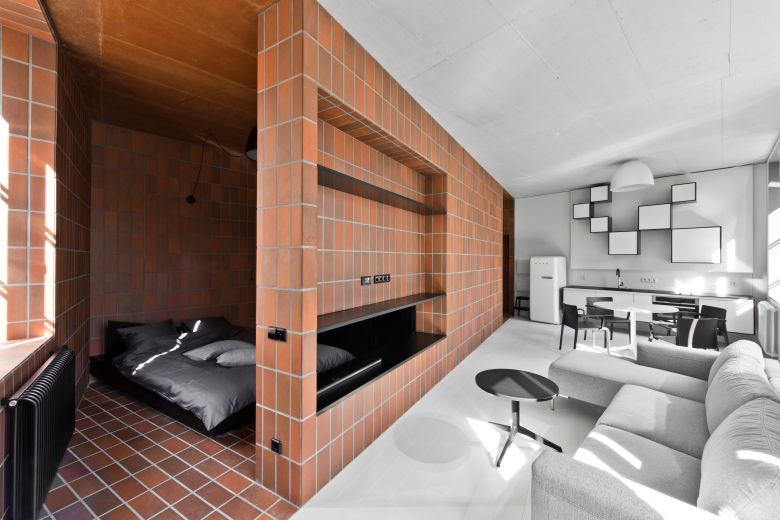YCL

Bazillion. Category: residential interior
Design: from 2015
Construction: from 2016
Address: Bazilijonų g., Vilnius
Architects: Tomas Umbrasas, Aidas Barzda, Tautvydas Vileikis, Rokas Kontvainis, Justė Surplytė
YCL is a small architecture studio (the term the architects use is boutique) that does not distinguish between large and small projects, but endeavours to give each one the attention it deserves. Similar to other representatives of the young generation of architects, YCL emphasizes teamwork as opposed to the importance of any one individual in their work. This collective is connected by a sensitive, subtle style with a focus on details and the aesthetic created thereby. Established in 2011 by former fellow students and like-minded individuals, the firm has already gained experience in Lithuania, Sweden and Switzerland. Perhaps this is why the practice does not limit itself to just Lithuania and also works in France and Belgium, as well as taking part in competitions in Denmark and the Netherlands. The international character of the studio is affirmed by actively maintained relationships with colleagues abroad and the constant attempt to not be trapped within the local bubble.
A 45-square metre apartment in the Vilnius Old Town became the perfect space for YCL to express its poetic conceptualism for which the designers received an award in the interiors competition My Space 2016. The space of the apartment was split on a slant into two wedge zones in an effort to eschew the usual proportions of residences in the Old Town. Thanks to the materials used, these two wedges became zones of opposing character – an almost monastery-like ceramic cell and an abstracted, neutral living room space. The connection between them became a fireplace that is visible and transmit heat from both sides. This surprising interior is a dialogue between the heavy and the light, bright and dark, closed and open, the material and the ethereal.
The allusion to a monastery cell is not by accident. According to the architects, the monastery that exists on that same street motivated them to search for a key to what a residence in the Old Town should look like today. An acute awareness of the atmosphere of the place, not necessarily the context, but the feeling that imbues the project’s surroundings is also a key part of the firm’s other projects. As is the ability to expertly work with furniture, with the interior and architectural details, the light, and most importantly with materials. It does not matter if it is clay, concrete, steel or wood – the character of each will be properly appreciated and will take on a form as though touched by the warm hand of the craftsman.